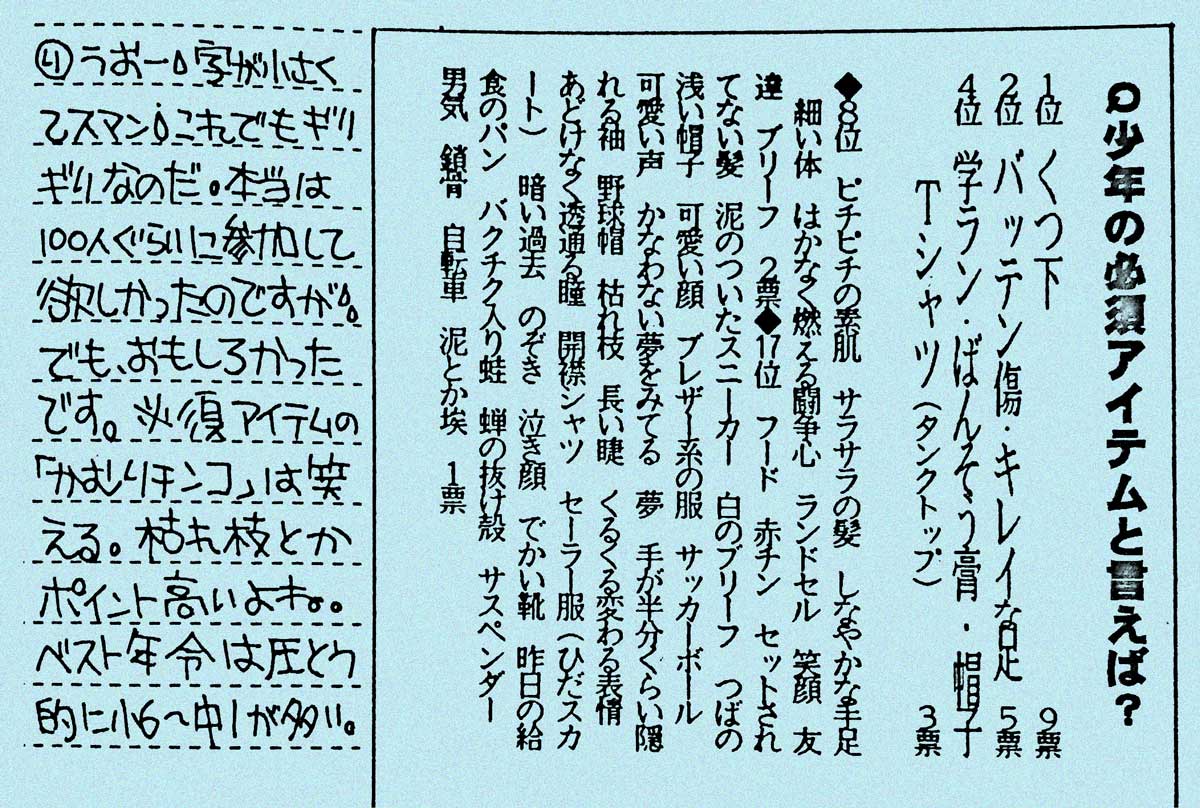This is the first study of “fudanshi” (腐男子), or “rotten boys”, originally published as a dōjinshi in 2008 by Yoshimoto Taimatsu. The term “fujoshi” (腐女子), or “rotten girls”, for women with a strong interest in BL and yaoi gained attention in 2006. Taimatsu-san turned his focus to male readers of BL and yaoi. In the words of Nagaike Kazumi:
In 2008, another male fan and critic of BL, Yoshimoto Taimatsu, self-published a study, Interviewing Fudanshi (Fudanshi ni kiku) in an initial attempt, by means of an innovative analysis of heterosexual male readings of BL, to make heterosexual male readers of BL (i.e., fudanshi or “rotten boys”) visible for the first time.
Nagaike, Kazumi. 2015. “Do Heterosexual Men Dream of Homosexual Men? BL Fudanshi and Discourse on Male Feminization.” In Boys Love Manga and Beyond: History, Culture, and Community in Japan, edited by Mark McLelland, Kazumi Nagaike, Katsuhiko Suganuma, and James Welker, 189–209. Jackson: University Press of Mississippi.
Taimatsu-san comments in the preface that the common image of straight men is that they are uninterested in, and sometimes hostile towards, homosexual imagery. Fudanshi obviously break with this homophobic tradition:
これまで男性は、同性愛者でない限り、同性愛は嫌いなのが当たり前と考えられてきた。 同性愛者は「近寄るな」と遠ざけられるか、 いいところネタとして、笑いの対象になるのがせいぜいだった。しかし「腐男子」は、嬉々 として男性同士の恋愛を楽しんでいる。いっ たい彼らはどのような性志向を持っているの だろうか?
Of particular interest is the interview with BL and shota expert Budouuri XQO-san (葡萄瓜さん), who has bought shota material “in realtime” since their appearance around 1991. Among other things, the two discuss how BL became a refuge for (straight) men who felt opressed in terms of love and sex during the bubble years, and how those men deal with the fact that the content is “homo”. As for shota research, they emphasise the importance of looking at reader letters in shota magazines.
Budouuri-san and Taimatsu-san discuss the allure of shota, and I want to quote from the interview here:
T: ただ、ショタには惹かれるものがあった のですよね。
B: ありましたね。男の子同士のふれあいは、 異性とのふれあいと少し違うかな、と言う感 覚がありました。
T: やっぱり男の子同士が一番いい、と感じ られていたのですか。
B: あくまでも男の子同士のふれあい、つながりの気分ですね。その表現としてエロもあ りと言うことで。
T: セックス先にありき、では無いわけです ね、一貫して。
B: 無いですね。
I think Fudanshi ni kiku is a unique contribution to this field, and I look forward to digging deeper into it.



